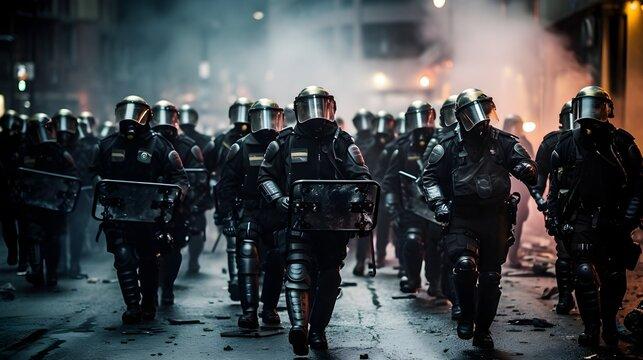In high-risk situations, protection matters more than anything else. Police officers and tactical units work in unpredictable environments. Protests, riots, and dangerous crowd events can turn violent without warning. In these moments, professional riot gear is the shield that keeps them safe while allowing them to do their job.
What Is Riot Gear?
Riot gear is specialized protective equipment. It is designed to keep officers safe from physical harm during dangerous situations. This gear can block blunt force, protect against sharp objects, and shield from dangerous projectiles. Each piece has a specific purpose to guard the most vulnerable areas of the body.
A standard riot gear set usually includes:
-
Helmet: Protects the head from blows, debris, or thrown objects.
-
Face visor: Shields the eyes and face without blocking vision.
-
Body armor: Guards the chest, back, arms, and sometimes the legs.
-
Gloves: Offers a strong grip and protects the hands from cuts or burns.
-
Shin and knee guards: Prevent injury from kicks or hard impacts.
-
Boots: Provide support and keep the feet safe.
Why Police and Tactical Units Need Professional Gear
During riots or violent gatherings, officers face rocks, bottles, sticks, and other dangerous objects. Without proper protection, even a small injury can remove an officer from duty. Professional riot gear reduces these risks.
It does more than just protect. It gives officers the confidence to handle tense situations. When an officer knows they are protected, they can focus on controlling the crowd and keeping the public safe.
Key Features of Professional Riot Gear
Modern riot gear is designed to be strong yet comfortable. The best equipment balances safety with mobility. Police and tactical units need to move quickly and respond to threats in seconds.
Key features include:
-
Impact resistance: High-strength materials absorb and spread the force of blows.
-
Lightweight design: Reduces fatigue during long operations.
-
Adjustable fit: Ensures the gear stays secure during movement.
-
Breathable padding: Helps keep officers cool under stress.
-
Fire resistance: Protects against burns in extreme cases.
Materials Used in Riot Gear
Most professional riot gear uses advanced plastics, reinforced fabrics, and lightweight metals. Common materials include polycarbonate for visors and ABS plastic for helmets. Body armor often has layers of Kevlar or similar ballistic fabrics. These materials are chosen because they are tough yet light enough to wear for hours.
How Gear Improves Officer Safety and Performance
The right gear can mean the difference between safety and injury. Riot helmets protect the brain from concussions. Body armor prevents broken ribs or internal injuries. Shin guards stop leg damage that could prevent an officer from moving.
Comfort is also a part of safety. If gear is too heavy or hot, officers tire faster. This can affect their awareness and reaction time. Professional riot gear is built to reduce this problem.
Training with Riot Gear
Having the best equipment is only part of the solution. Officers also train to use it effectively. Training includes putting on gear quickly, moving in formation, and using shields for protection. This ensures they can respond fast when danger appears.
Conclusion
Police officers and tactical units put themselves in harm’s way to protect the public. In dangerous situations, professional riot gear is not optional it is essential. It shields them from serious injury, improves their performance, and allows them to focus on maintaining order.
With strong materials, smart design, and proper training, this equipment helps officers return home safely after facing high-risk situations. Professional riot gear is more than protective clothing it is a lifeline in the line of duty.



